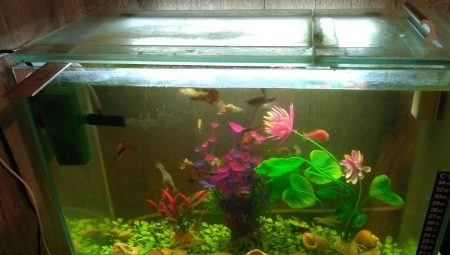The experienced aquarist is familiar with the axiom that there is no unnecessary space inside a glass jar. Its inhabitants are only happy expanse and the opportunity to frolic. However, the place that is not always prepared for placement of the aquarium has large dimensions. Then universal versions of glass structures with a volume of 30 liters come to the rescue.
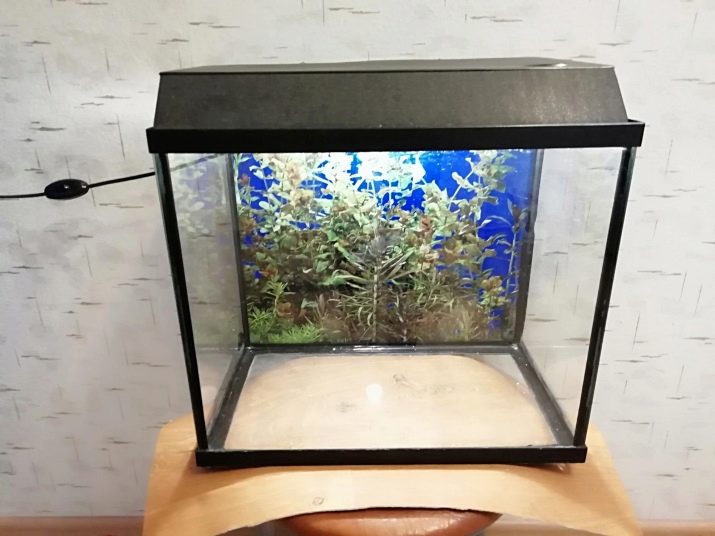
Advantages and disadvantages
Before you get a 30-liter aquarium, a person needs to weigh the pros and cons, to analyze its advantages and disadvantages. Caring for large aquariums is not difficult, but structures with a small volume require special owner discipline.
First, it is proposed to consider the advantages of a 30-liter aquarium.
- Light weight and dimensions allow you to set the glass container in the most convenient place. For example, on a bedside table, a coffee table, and even on the desktop.
- The cost of an aquarium of 30 liters does not hit the family budget. The same goes for optional equipment.
- Buying the necessary vitamin complexes and mineral supplements will cost very dear to the owners.
- Ease of maintenance.
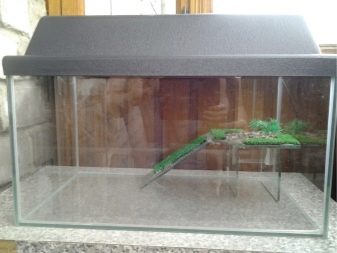
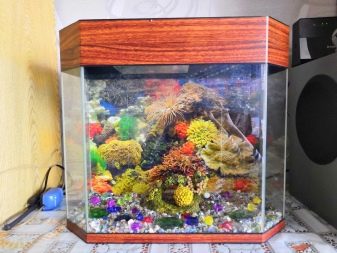
As for the shortcomings, things are rather complicated with aquariums of small volumes.
- A small amount is quickly contaminated, so you have to do a weekly water change. Even one missed week can negatively affect the health of fish.
- Feed the aquarium inhabitants should be within reason. In no case can you overfeed scaly creatures. An ideal regimen will be two meals a day in small portions.
- To keep the water clean, food debris must be removed immediately after feeding.
- In the summer season you will have to constantly add evaporated water.
- In aquariums with a small volume, it is difficult to maintain the temperature regime and a high-quality filtration process.
- Even with the ideal content of a 30-liter aquarium, it is likely that the concentration of nitrogen compounds in the water will increase.
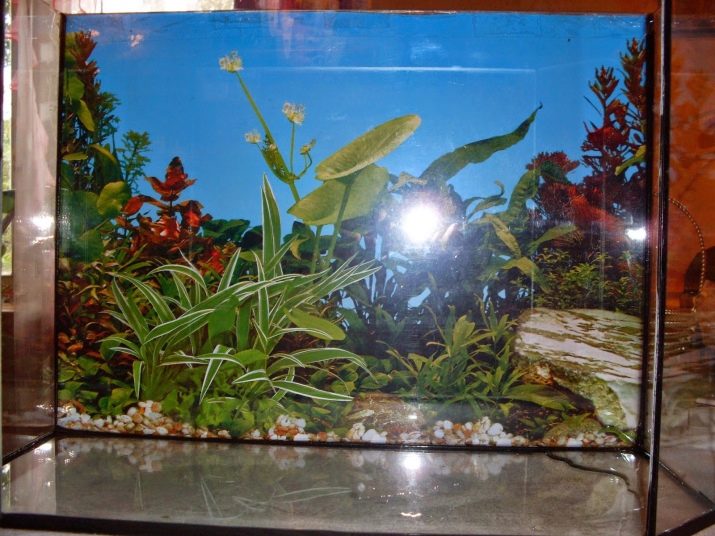
Shape and size options
The rectangular shape of the aquarium is considered a classic. The direct equipment conveniently houses the necessary equipment. But most importantly, it is very easy to maintain. The main advantage of rectangular aquariums is in a large area of surface water, which guarantees the fastest possible process of saturation of the liquid with oxygen.
Round aquariums are not in great demand, although they are quite common on sale. Of course, their appearance is very attractive, but it is not always possible to correctly place them. The design should be accessible for viewing from any side of the room. And to ensure a comprehensive view, it is very important that the glass of the aquarium is always clean. A tangible drawback of round aquariums is the refraction of forms, which distorts the view of the inhabitants of a glass jar.
Panoramic structures with a curved outer wall have a similar viewing problem to a circular aquarium, namely, visual distortion of the view of the inhabitants of a glass jar. In general, an aquarium with a curved front wall looks aesthetically pleasing and modern, it blends perfectly with any room interior.

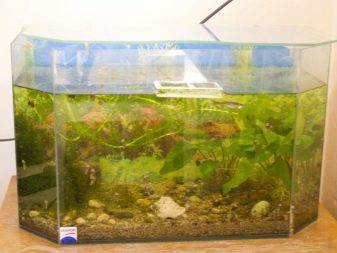
Today are in great demand. cubic forms of aquariums. They have advantages similar to rectangular designs, only take up much less space. An important advantage of cubic tanks are straight walls, on which filters and additional devices are easily fixed.
The shape of the aquarium in the form of a tower or column at home is extremely rare. Basically, they are placed in offices at the reception. They take up little space, but conquer the hearts of others with their height, which can be 100 cm or even more.
Designs look elegant and aesthetically pleasing. Just keep such an aquarium is extremely difficult. Even the normal process of replacing water is fraught with accidental tipping of the structure.

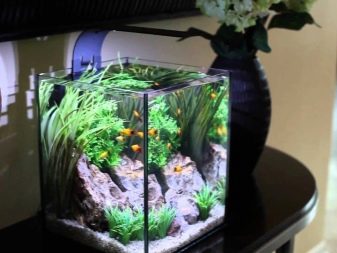
How to choose?
It may seem that choosing the perfect aquarium is extremely difficult. But if you follow the rules of experienced aquarists, you can easily cope with the task.
Initially, you need to determine the size of the aquarium. Even a 30-liter design can vary in size, for example, be narrow in length and width, but high. Or have a great length, but a shallow depth. Moreover, the depth is the main parameter of the ideal design of a glass house for fish. For the correct perception of the internal space, the depth indicator should not differ greatly with the height parameters.
The next selection factor is the shape of the structure.
For beginner aquarists, it is best to start working with the classic version, namely with a rectangular tank. And a professional can choose a product of various shapes, whether it be a polygonal design or an aquarium with curved walls.
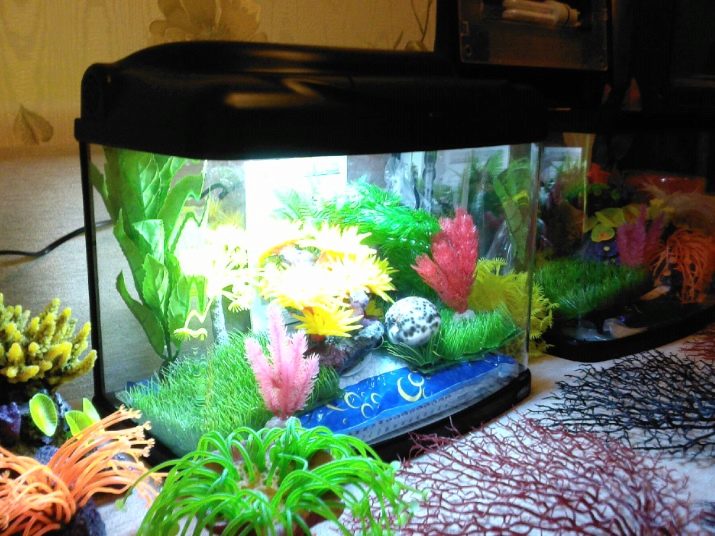
It is very important to pay attention to the material from which the walls of the aquarium are made. It can be acrylic or glass. Acrylic material is not inferior in transparency to perfectly washed glass, in addition, it is characterized by increased strength and resistance to stress, but, unfortunately, can not boast of good thermal conductivity. And with improper care, scratches remain on its surface, only polishing will help get rid of them. It is very difficult to scratch the glass, but it is not easy to clean it from dirt, especially from the inside.In addition, structures made of glass weigh significantly more, which is why many manufacturers refuse to manufacture large-volume aquariums with glass walls.
It is very important to determine the location of the glass structure in advance. The material of the frame capable of withstanding heavy weight depends on this. For large models, a metal base is required, and a 30-liter aquarium is sufficient for a bedside table made of chipboard or MDF.
Particular attention should be paid to the lid of the aquarium. From the constructive side, they can be divided into factory blanks, hinged and sliding. At the same time, the sliding system is the most convenient. If necessary, one glass slides on the second. With this mechanism, it’s very convenient to feed the fish, clean the aquarium and let the water “breathe”.

Where to install?
It is important for novice aquarists to know that a glass jar with scaly inhabitants should not catch the eye of households, but at the same time be visible. In principle, you can put a container with fish in any room, the main thing is that it does not come in contact with direct sunlight. It is best to place the product in a darkened niche away from the window. Of course, fish need bright light, but only during the period of vitamin deficiency and spawning. As a light source, a lamp is used that does not harm living creatures.
Fish lovers should remember that these babies do not like overheating or cold. They need uniform heat. therefore Do not place the aquarium near heating appliances.
The eastern side of the house will be the most ideal option for placing an aquarium. It is there that the aquatic living creatures can enjoy the coziness and comfort in their home.
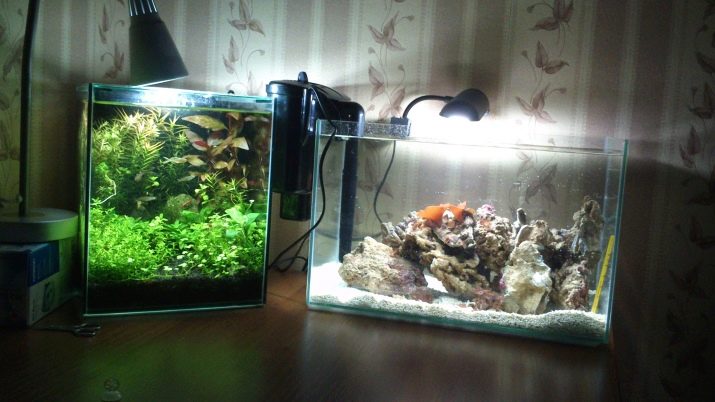
How to equip?
Choosing the appropriate shape of the aquarium, you need to think about the equipment.
- Filter. It can be both internal and external. For a small aquarium with a capacity of 30 liters, an indoor unit with a capacity of 25-40 watts will be an ideal option. A more powerful filter will create strong fluctuations in water, which can lead to stress in the aquarium inhabitants. The unit is installed according to the instructions from the manufacturer. Once a week, the filter must be rinsed with water from the aquarium so as not to upset the balance of bacteria.
- Lighting. A lamp holder has already been installed in factory aquariums. It remains only to purchase a lighting element. When choosing a lamp should take into account the needs of plants. For unpretentious vegetation, 0.3 W / liter of power of the lighting device is enough. For aquarium space you need LED and metal halide lamps. Unlike incandescent lamps, they do not heat water and give diffused light.
- Thermometer. An irreplaceable thing in any aquarium. The owner of the fish house should at any time be able to find out the temperature of the water.
- Heater. The unit is used mainly in the winter, as well as in aquariums, where live fish requiring heat.
- Compressor. This is the most important equipment in any aquarium. It is he who contributes to the rapid saturation of water with oxygen, the necessary plants and living creatures.
- Feeders. With their help, it will turn out to keep the aquarium water clean, since all the food will be in one place.
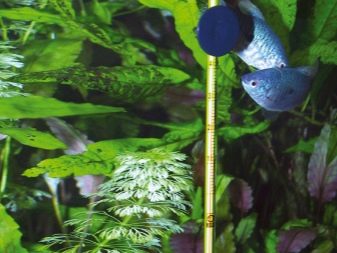
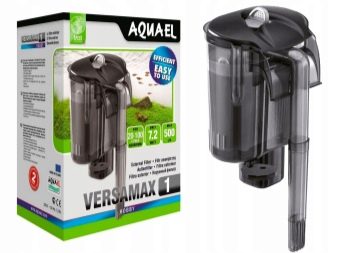
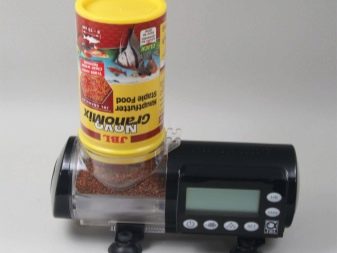
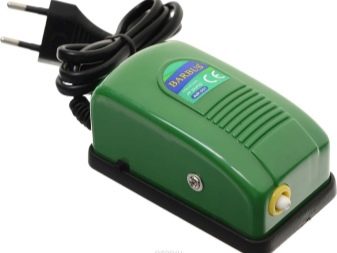
How to start?
The future life depends on the proper launch of the aquarium. If you make at least one mistake, it is likely that beneficial bacteria will not be produced in the aquatic environment.
First you need to prepare the soil. It is one of the important elements in arranging the aquarium, as it contributes to the creation of a special microclimate. In the primer layers, 90% of important bacteria are located. Gravel soil must be boiled in salt water, and sand calcined in a pan. Then they need to be sieved. After the aquarium is 1/3 filled with water, the prepared soil is laid out in the water. Immediately you can create a bumpy composition or make an even layer.
The next step in the launch is to decorate the aquarium. This is the very moment when its owner can connect a fantasy and make an unusual composition. After that, you can fill in the remaining empty space in the aquarium.
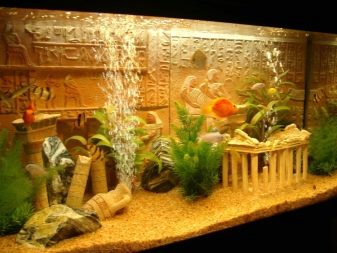
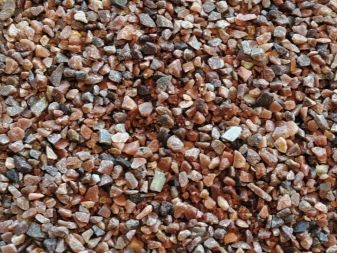
The water in this case is the most common, but before pouring it into the fish house, several tests should be carried out to check the fluid parameters. If at least one indicator is not normal, water is necessary stand for 12 hours. This is enough for all the chlorine to evaporate. And already settled water can be poured, after which leave the aquarium filled to the top alone.
After 3-4 days, the water inside the structure will become cloudy. This indicates the beginning of the process of reproduction of bacteria. In a couple of days, the liquid will become transparent.
After the water has become transparent, you can install equipment, a filter, a compressor and a heater. All of them are firmly fixed by the suction cups on the inside of the glass structure. The latest installation equipment is a thermometer. It should be located in a place visible to the owner. Heater is installed at around 24-25 degrees, and the thermometer will already show the process of heating the liquid. At the same time, the lamp cannot be turned on. The aquarium with installed equipment remains at rest for one week.
After a specified period of time, you can begin to plant plants. At the end of the work, you need to turn on the light in the aquarium. It is important to remember that lighting should work no more than 8 hours a day. After the planting procedure, the aquarium must be left alone for 1-2 days, and after that populate the prepared house with fish.
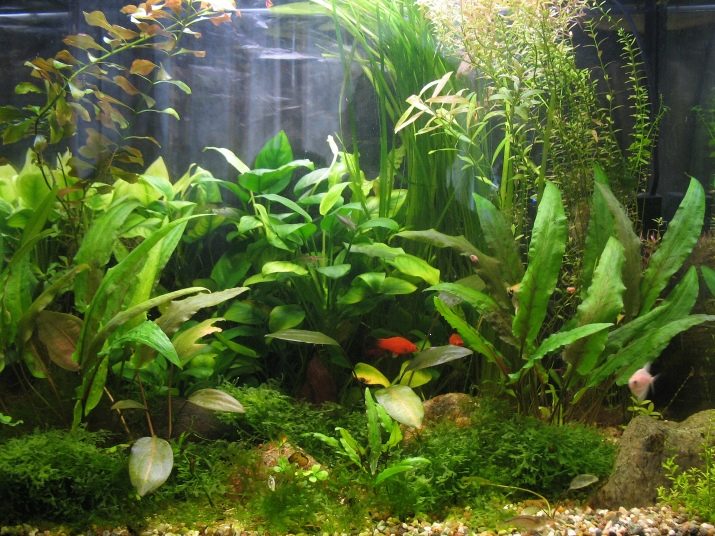
How to contain?
A properly launched aquarium is just the beginning. It is important for the container owner preconfigure yourself for weekly maintenance of the contents of the design. It may seem that caring for an aquarium is very difficult, but if you get used to it, you can even enjoy the process.
To carry out cleaning inside the aquarium, you will need to acquire special equipment, namely, a net for fishing, a siphon that allows you to clean the soil, and a high-quality scraper to clean the inner surface of the glass.



The process of cleaning the aquarium consists of 4 stages:
- ground layer cleaning;
- partial water change;
- flushing aquarium equipment;
- glass cleaning.
So that the fish do not get stress from the cleaning process, it is necessary to transplant them into another aquarium. Just for these purposes a net is required. It is not necessary that the additional aquarium be large. Fish will have to sit in it for quite a bit of time. In addition, the additional capacity will serve as a temporary shelter for new fish.
Having finished cleaning the aquarium, it is possible to return scaly inhabitants to it. At the same time, the fish will not even notice the transplant procedure, respectively, will not experience stress.
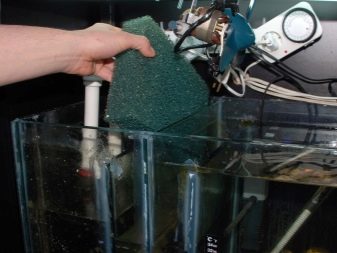

How many and what kind of fish can I keep?
The most interesting stage in starting up an aquarium is the settlement of the water area by living creatures. In large tanks, there is no problem with this issue, but with constructions of 30 liters it will take a little thought. The main difference between small tanks is the inability to populate large-sized fish in large numbers of other living creatures in them. Therefore, preference should be given to small scaly creatures.
In a 30-liter aquarium, you can populate a flock of molyesias or swordsmen, consisting of 10 representatives. It is best to have somics in an amount of up to 5 pieces, because of the sufficient free space they will be able to feel comfortable. Vivid thorns feel comfort and tranquility, living in a single aquatic environment with a flock of 10 individuals.
Gourami are slightly larger in size, so they should not be kept in an amount of more than 8 representatives. But the cute, charming and playful guppies in the amount of 20 pieces will share the 30-liter house with great pleasure.
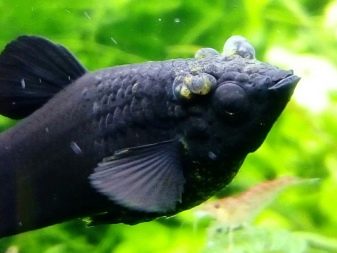
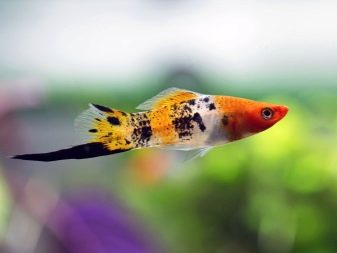
However, most aquarists prefer to combine different representatives of the aquarium environment. And so that no conflicts arise between living creatures, it is important to know the rules for combining different types of fish. So, for example, in a 30-liter aquarium, 5 barbs, 3 catfish and 10 mossy barbs take root well. By a similar example, 4 zebrafish, 10 guppies and 3 catfish will fit together.
In addition to ordinary fish, aquarists can get snails or shrimp. The main thing is to know that for a capacity of 30 liters the number of these creatures should not exceed 10 pieces. Subject to all these rules, it will be possible to create an unusual underwater world at home.

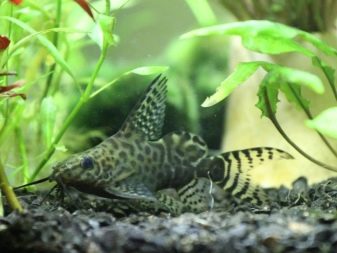
The features of the 30 liter aquarium are shown in the next video.
